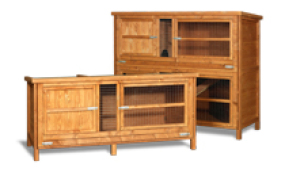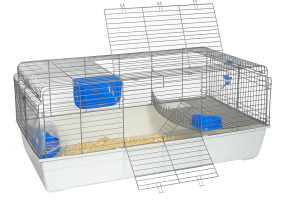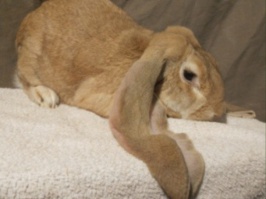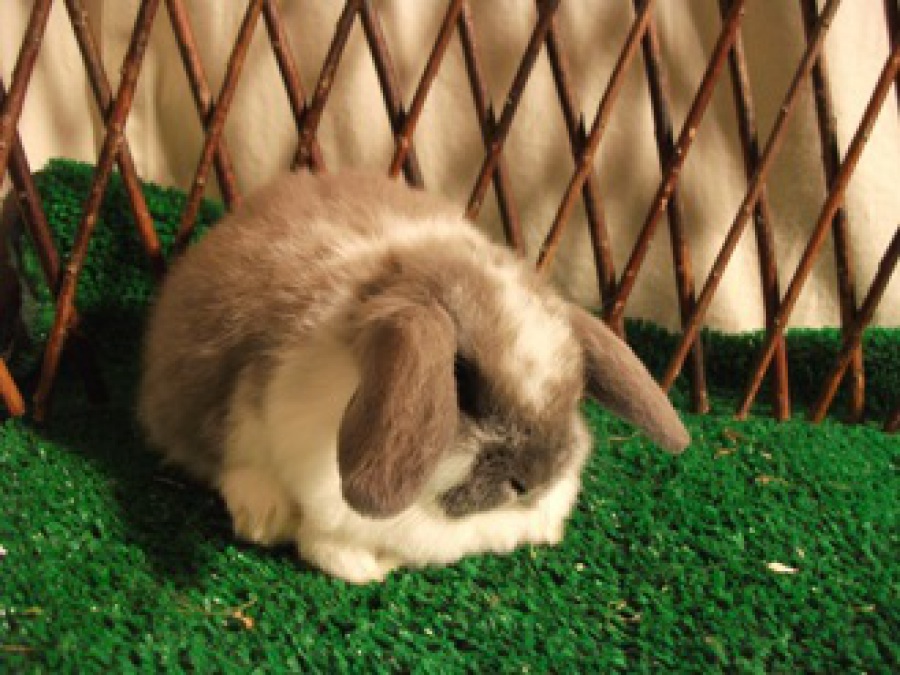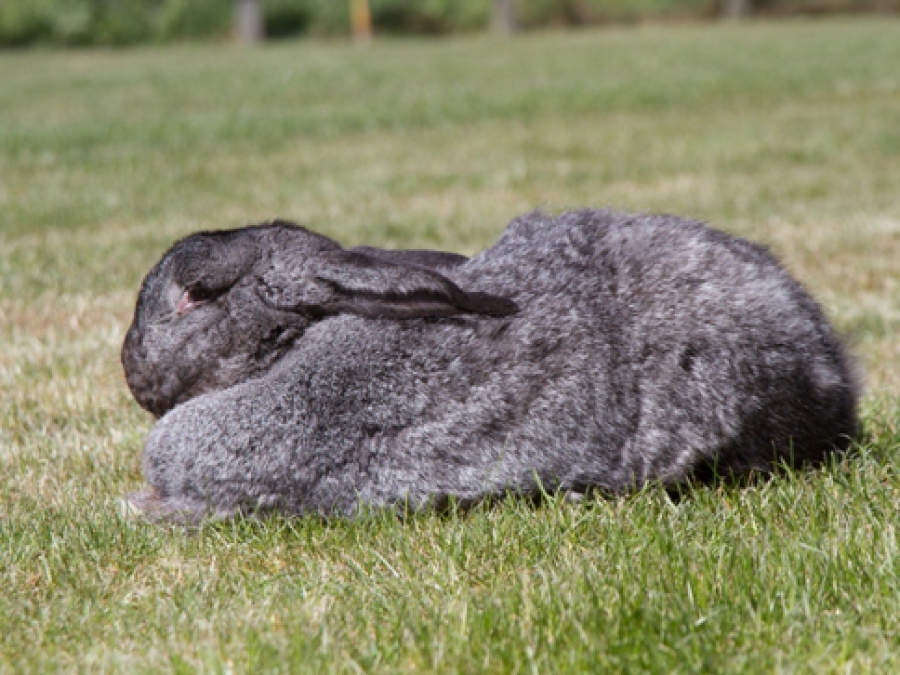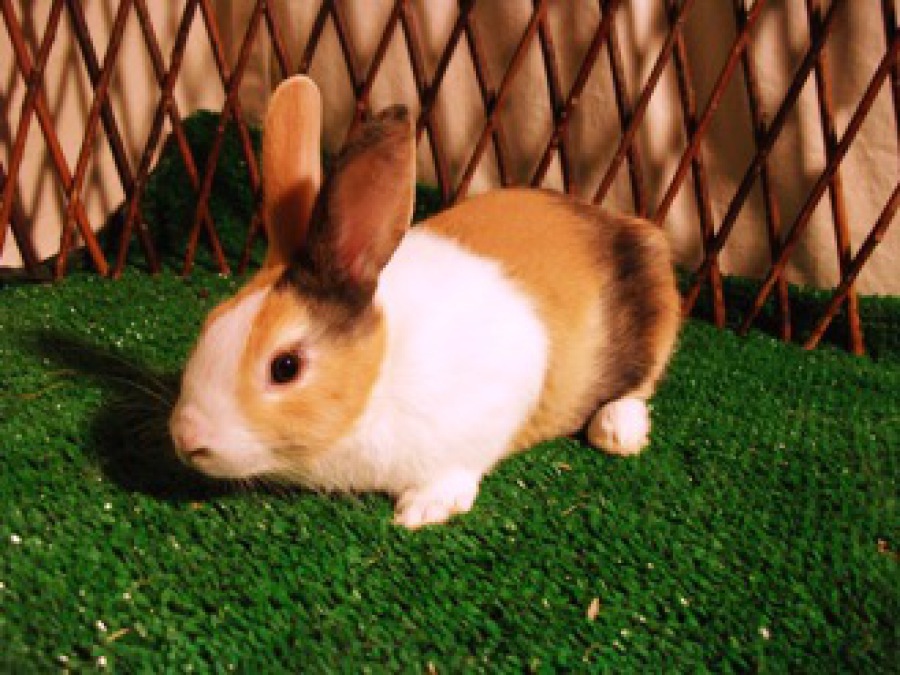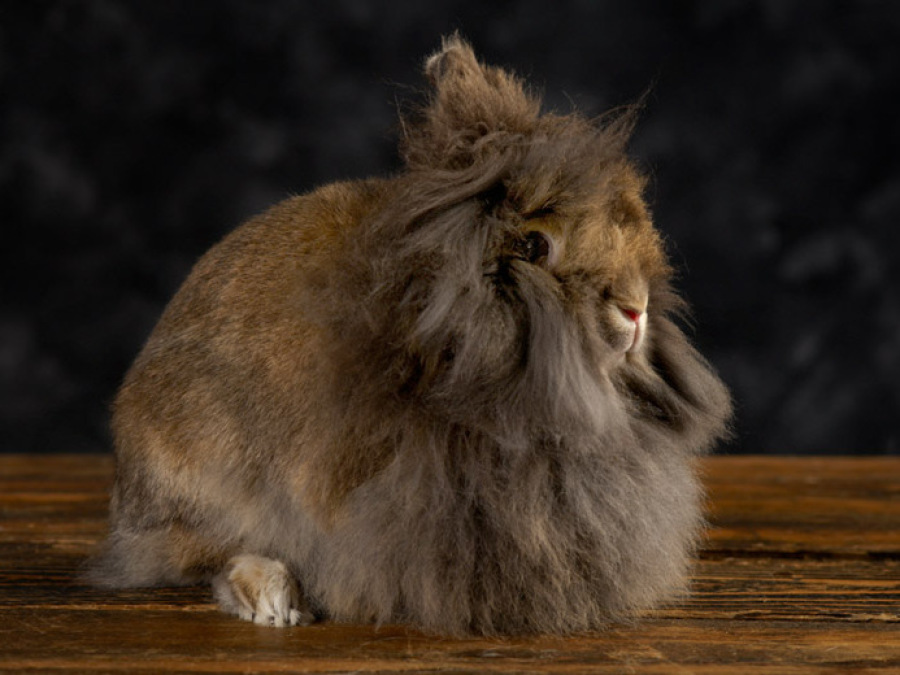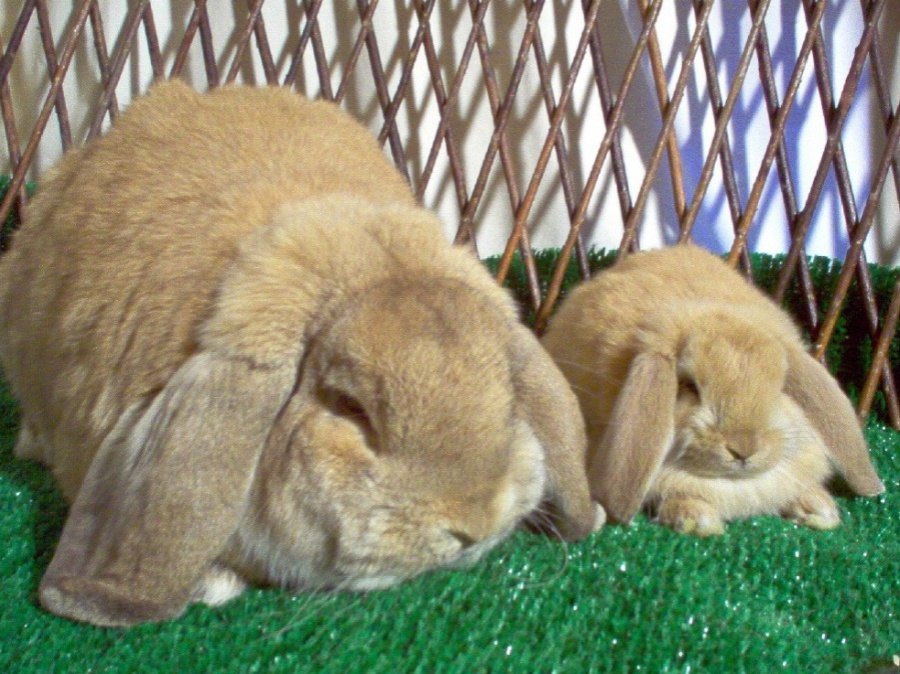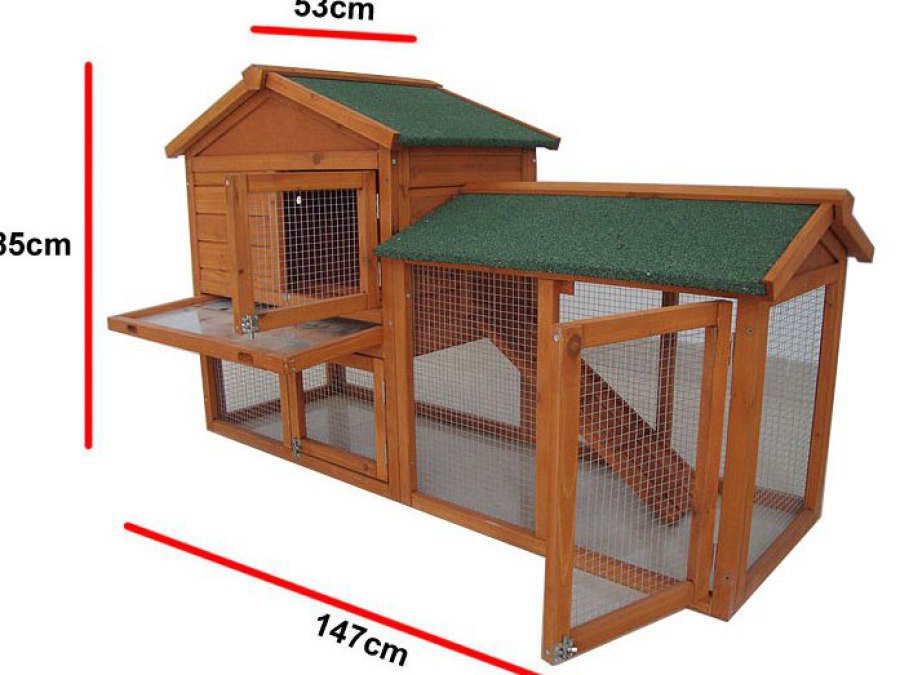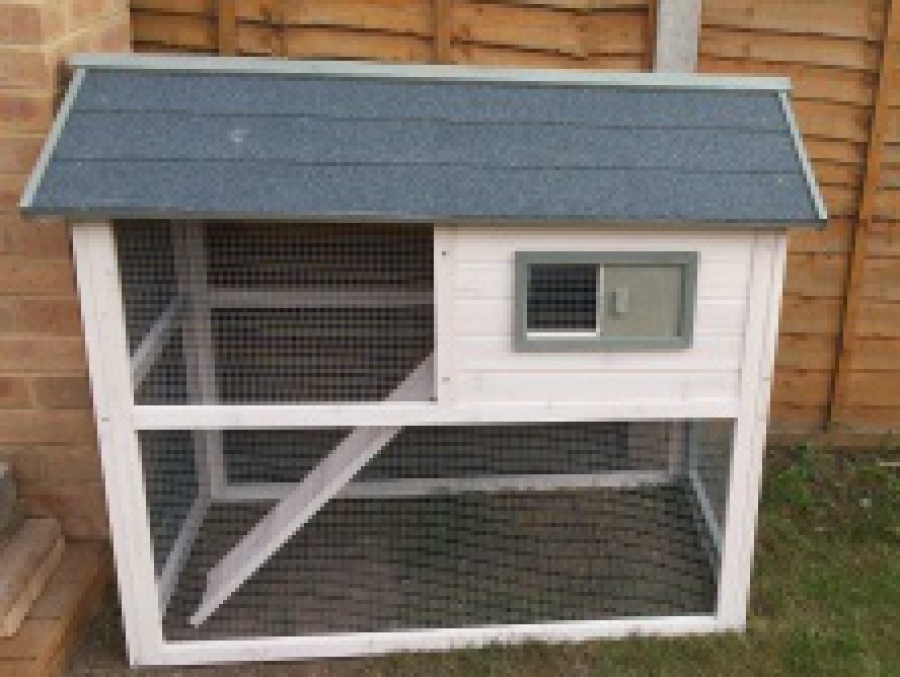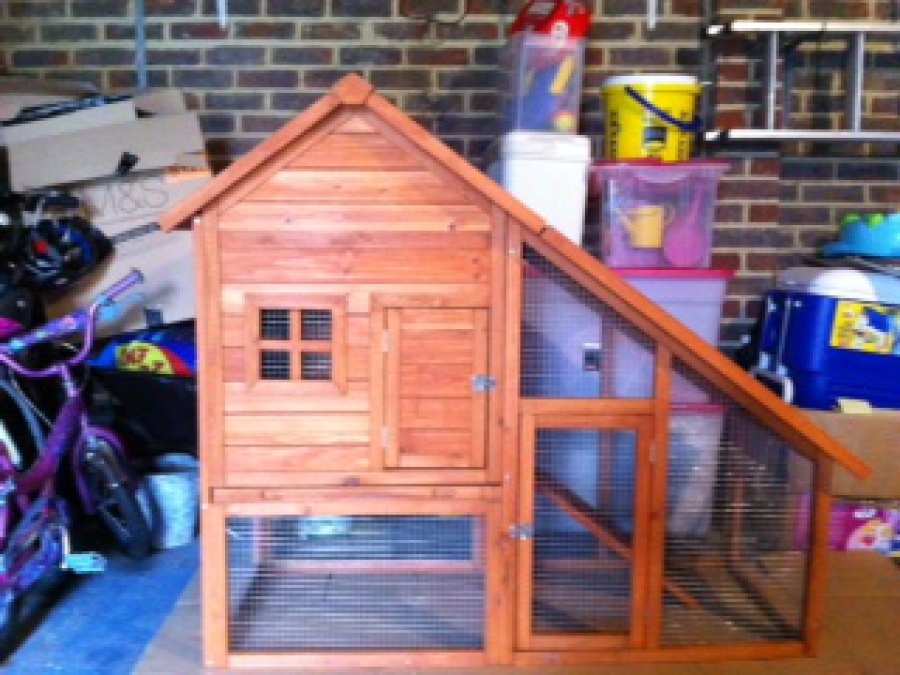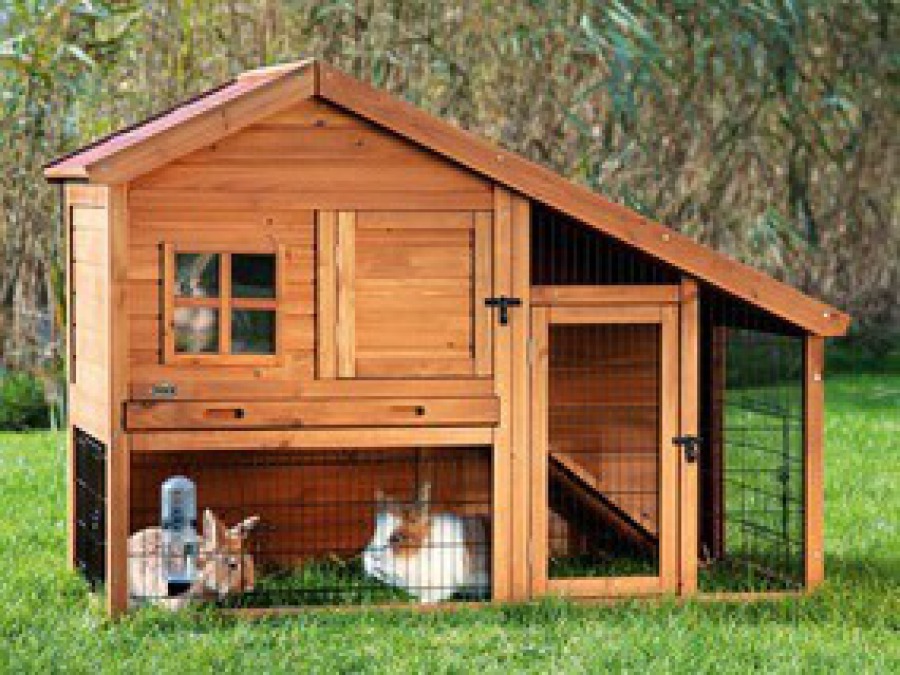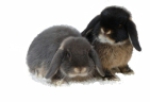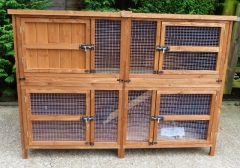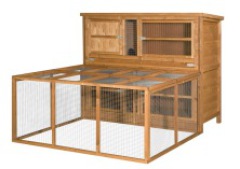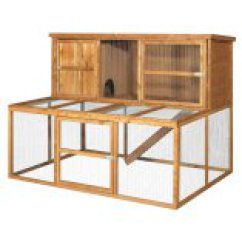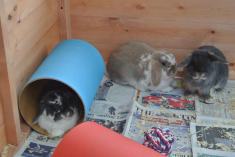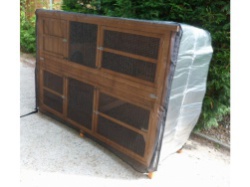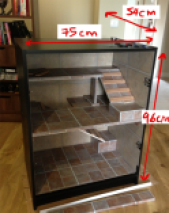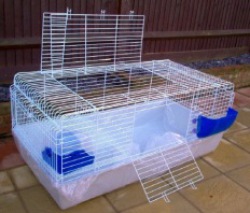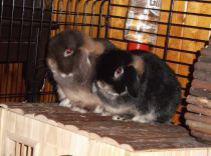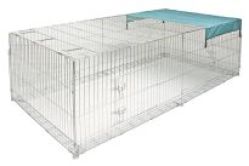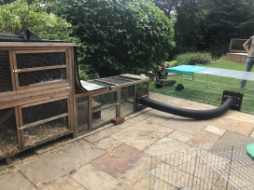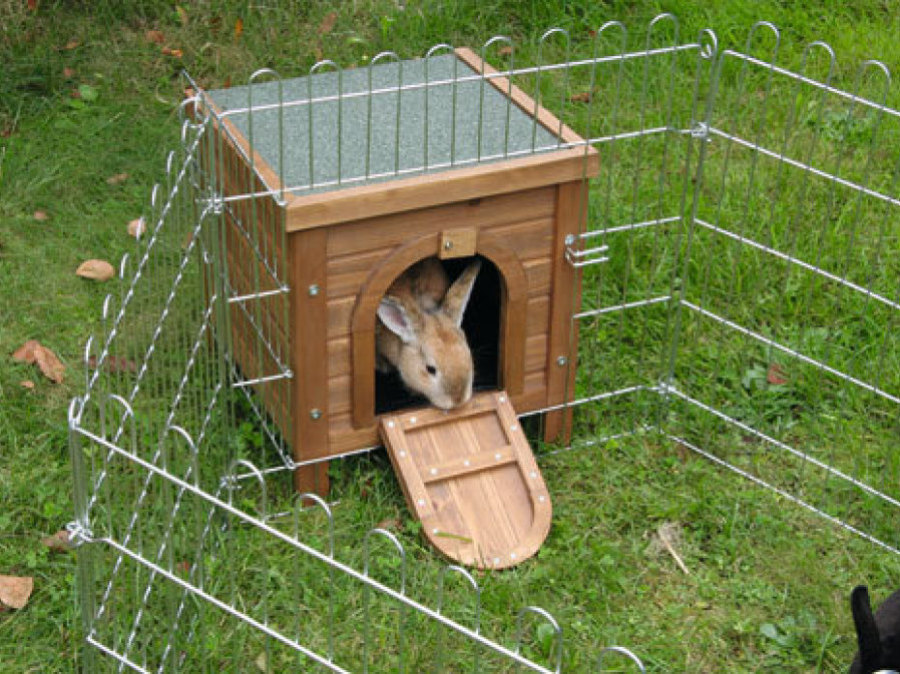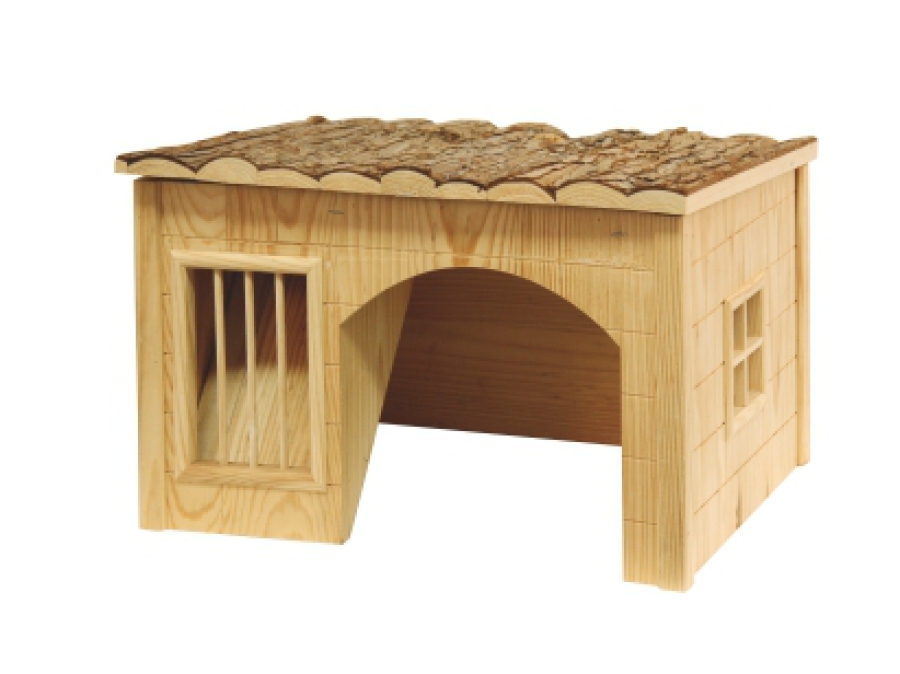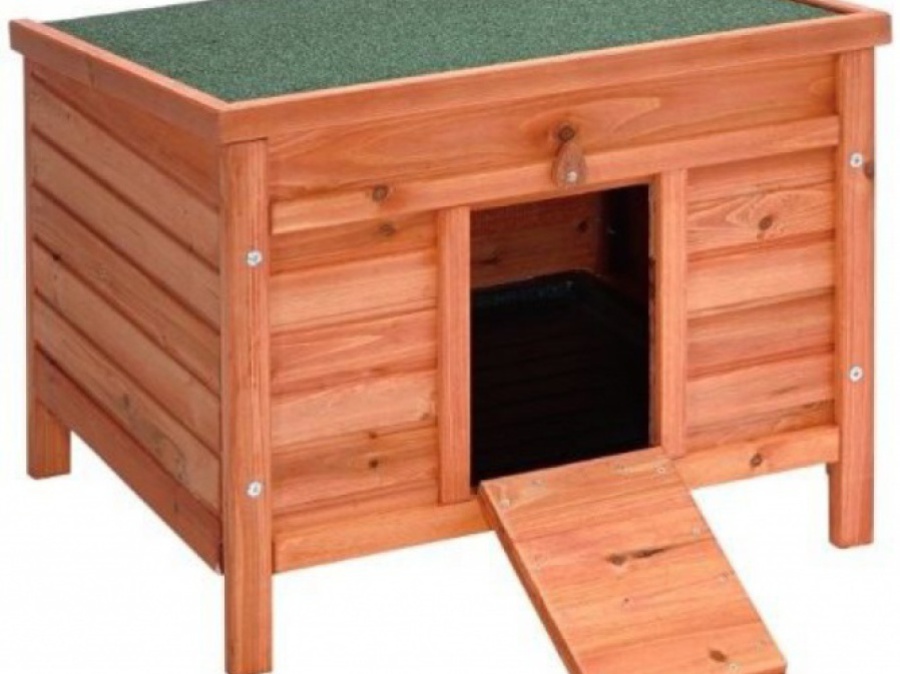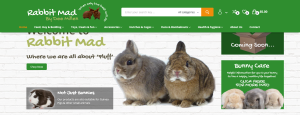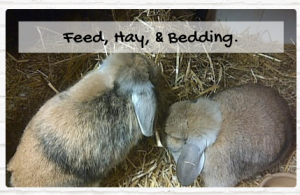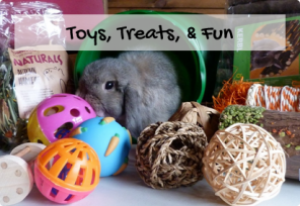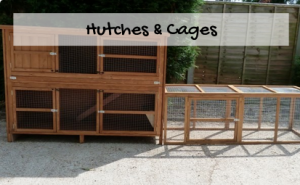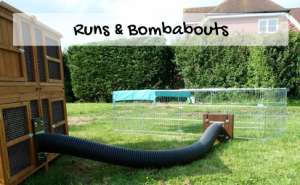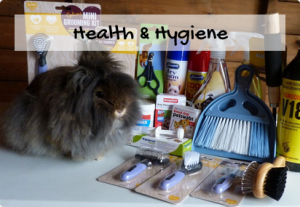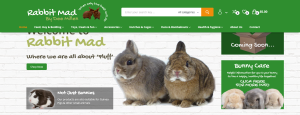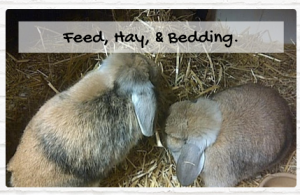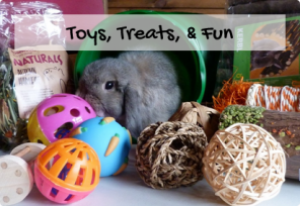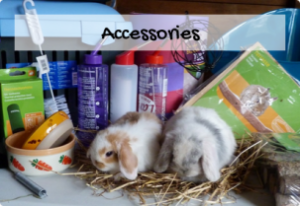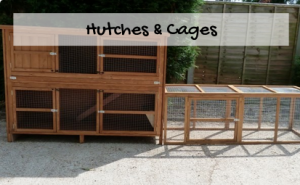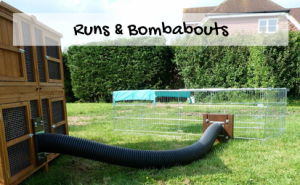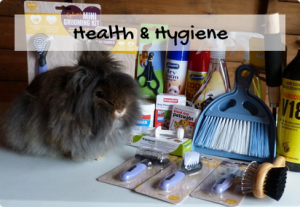Rabbit Housing
Rabbits can be kept outside or indoors
even voice trained, they are more intelligent and interactive than people think, they easily fit in to family life and can be more entertaining than the TV, with their funny little ways, the mad five minutes whizzing here and there, their curious in to every thing exploring nature. Rabbits kept indoors will normally end up as better pets as you can spend more time with them. You can always start your new pet bunny/s off indoors for interaction and training, moving them out to an outside cage and area when they are older and responding well.
The decision as to where the rabbit is to be kept will affect the type of Cage or Hutch. It is important to buy the correct size and style for the breed of rabbit that you choose and the amount you home.
A Netherland Dwarf will not need the size cage that a French Lop or Giant will. The rabbit will need room to stretch out and to stand up on its back legs should it feel the urge. A rabbit hutch that's too small can affect your rabbit’s health - causing spine problems, muscle wastage and obesity.
Rabbits can have a long life span, so making sure you buy a hutch which is sturdy, and secure (from animals trying to get in as well as the rabbit trying to escape) and waterproof, will be a sound investment. Or if homing rabbits indoors buying the correct style and size from the beginning, will stop the unnecessary purchase of more than one cage.
Hutch Size Guidelines
So what and where should I get my Bunnies new home?
Most reputable pet shops sell good quality hutches and some sell indoor cages ideal for pet rabbits to live in the garden or home. Caution must be taken if buying a hutch on-line, as the quality of these can not be assessed nor can the actual size, as most listings will give the measurements of the roof rather than the actual hutch body. Some will claim that their hutches are suitable for a pair of rabbits but this is rarely correct. More information on hutch size, please visit "the RWA's site a hutch is not enough".
Rabbit Mad stock an excellent range of heavy duty large outside hutches and Deluxe indoor cages. We can advice you on the correct size and style for the rabbits you are homing. These may well not be the cheapest on the market but they are made to last, and most importantly; to keep your pet safe and sound. The designed for these hutches also gives you the ability to approach your rabbit correctly, and for you to be able to handle the bunny without a "game of chase" starting. If you have homed a bunny from Dee-you will be un-doing all the training that she has started with them. You must gain the rabbits trust, and chasing the rabbit will not allow you to do this. On collection of your new pet from Dee she will do a "Bunny workshop" with you that runs through training, handling and care-showing you some of her training tips that she has learnt over the last 50 years of having bunnies.
So before buying your hutch decide which breed of bunny you are going to have.
Different breeds will require different size hutches/cages and runs. It is essential that your rabbit has the room to stretch in all directions. A French Lop or Giant will need a minimum of a 6ftx 2ft x2ft outside hutch with exercise run area or a Rabbit 150 inside cage with playpen attached to the front. For a small/medium sized bunny the minimum size outside hutch- is 4ft x 2ft - although this is really not ideal, Dee will only home to a 5ftx2ft hutch outside with exercise run area or for inside- the minimum is a Rabbit 120 with a play pen attached (single Dwarf only). If homing a pair then the sizes need to be increased. Of course bigger is always better. We do not stock outside hutches under 5ft and will not advise homing rabbits in anything smaller.
Dee will not let rabbits go to homes if they believe that the hutch is too small or of a poor style or inadequate for the well being of the bunny. If you are thinking of a house rabbit then it is better to invest in an indoor plastic cage, these are far easier to keep clean indoors plus will give the rabbit a better view of the world, with better ventilation, a training pen attached to the front for training is a must. Once bunny knows the house rules and you can trust them to return to the litter tray when they need to "go" and not to chew everything in sight -the training pen can be removed. If you are wanting to home rabbit/s from Dee, and you already have a hutch or cage, you will be asked to email us photo's and confirm it's size. If you are yet to purchase a hutch or cage we will advise you on the correct one for the pet rabbits you are homing.
The wrong style of hutch will result in a poorly trained, unfriendly bunny. If you can't approach or pick up your rabbit easily you will not have a friendly interactive pet rabbit. Children will soon lose interest in their new pet if it is running away from them all the time. The worse hutches we have found for this are Omelets, or chicken house styles ones. They are often described as large hutches when in reality they are the opposite. The actual living area is the house section, this is often as small as 24" x 27" (that's a tiny 648), this is not a big enough area to shut a pair of rabbits in at night, they will end up fighting, the run should be deemed as an extra space not living area as this is not available 24/7. Dee will not home baby rabbits to this style of hutch.
These styles of hutches we deem as unsuitable, these are chicken house style.
We do not home to this style of hutch.
Chickens and rabbits behave very differently at night. Chickens roost, -so they do not need a large area just a perch to sleep on, where rabbits are as active at night as they are during the day- preferring to have power naps throughout the day and night rather than a good nights sleep. The light and ventilation on these style hutches is also very poor with a tiny window to the front. It is very hard to train bunnies to be good pets in this style of hutch. They soon learn were to sit that you can not get them easily. If you have to chase them to get them you will always have to chase them so you will not end up with friendly interactive bunnies. The only thing this style of hutch have going for them -is they looks nice, but "nice" is not really a suitable practical hutch for friendly happy bunnies. If the house section of these hutches was a minimum of 4ft/5ft with a decent sized door for ventilation, then they would be fine, the run section would then be an added bonus. You could of then started the new baby in just the hutch section whilst they settle in and whilst they are being trained, then gradually allow them the run section when they know that you are not going to chase them and they are happily coming towards you for handling. We do not recomend omelettes or iglu style housing for baby rabbits, it's no fun for you either in the winter months- crawling up the end of a run to get two rabbits that have learnt where to sit that you can not get them. The house section is far too small to shut rabbits into at night. In the winter months you really want the rabbits away safe and warm.
Double storey hutches:
Like our Malling Double Deluxe range -where both floors are raised off the ground, giving the rabbits access to both levels 24/7 ~52 weeks a year no matter what the weather is doing. These are available in two sizes: 5ft and 6ft. So you can match the right size to the breed of rabbit. They are heavy duty made of robust 10mm tongue & groove solid wood and 9mm ply floors, green felted roofs with 4mm ply under, prime 16g weld grade wire mesh, heavy duty bolts for secure door fastening, extra locks and metal turn buttons instead of the normal plastic. These are also screwed together and not just stapled.These have an in-built nest box resting area, two advantages with this is on a cold night bunnies can keep themselves snuggly in the half size nest box and secondly they will also spend many hours snoozing sitting on top of this. Another handy feature is the removable cleaning out plinth-this keeps all the bedding in the hutch rather than falling out to make a mess in the garden, this can on cleaning out day be removed allowing you to give the hutch a good clean out.
The 5ft double storey offers a whopping combined living area space of-2'880 and the 6ft is an impressive 3'456. Run extensions the width of your hutch by 4ft deep can be added- giving the rabbits an extra running space of:on on a 5ft hutch-2'880, 6ft hutch-3'456. Double sized runs and side runs are also available if you have the space. Or you can attach one of our Bunny Bomb Abouts to the hutch to a garden run- the possibilities are endless There is the option of two covers- the hutch hugger and the hutch snuggler, tailor made to fit completing this hutch package, and making it one of the best buys around with the added bonus of being English built.
Hutch with run under.
Rabbit hutch with run enclosure under. If these are sited on grass then you must make sure that your pet is put in the upper hutch section of a night to protect it from Mr Fox and from bunny doing "the great escape" and digging out. If you have a bonded pair of bunnies or a group the upstairs level needs to be of a very good size -so the rabbits do not end up fighting. They are just as active at night as they are during the day, so halving there living area at night is not always a good idea. Make sure it is deep enough, to allow for the area that the ramp and ramp hole will take up. Always check the depth when buying else where. A lot of hutches are only 18" deep -this is far far to narrow and will not give the rabbits enough room to pass each other or lay out without the fear of falling down the hole. These we believe should not be sold as rabbit hutches. This style of hutches are not always best suites to very young rabbits, once a rabbit is trained they are fine. Cleaning out can also be interesting. We do not stock this style of hutch as we believe the option of above is far better.
Single level hutches.
Single level hutches that can have runs added to the front or side are the best as this will double the area that the rabbit has. Our new Malling super extended Deluxe comes in 4 sizes, and will gives the bunnies a massive 12ft of area that's 3456 of combined living area in the 6ft hutch/6ft run option. With the advantage of being able to add a second run to the front of the hutch as well as the side run, plus you can detach the existing side run from the hutch should the weather turn cold, so you can move the hutch into a shed, garage or even indoors, You can really match this to the breed of rabbits that you home and where you situated the hutch season to season, and again it's a heavy duty English built hutch.
The Malling Single deluxe, comes in two sizes 5ft and 6ft these have the same feature benefits as the double Mallings: nest box/ resting area, cleaning out plinth, heavy duty bolts plus being built with the same material.They have the option of a run extension in two sizes and two covers, the hutch hugger and hutch snuggler. They are raised off the ground on short legs.
Never stand a hutch directly on the ground as it will quickly become damp and cold, you could even end up with a un-wanted family of mice living under the hutch- popping into the cage at meal
times. So short legs of at least 4" are a necessity.
Remember that the hutch needs to be solid and water proof. When making the decisions about your hutch, bear in mind the following, remembering that cheap is not always a sound investment if the
hutch only lasts a year or is of such poor soft wood quality your bunny escapes and you lose them -to Mr fox. Make sure the door bolts secure the doors and the wire of the cage sufficient, to keep
bunny in and Mr Fox out. A clever bunnies will learn how to rattle a door -so it will open.
A hutch should be look on as an investment and if this is chosen wisely it will last for years and will not need replacing two years in to being bunny owners.
Make sure it is the correct size for the breed of bunny.
If housing a pair of bunnies, make sure they have got enough room to get away from each other if they are having an off day with each another. Pairs of rabbits living in a too smaller hutch are more
likely to fight than those that have plenty of space. Our minimum recommend size hutch for a single small/medium breed of bunny is a 5ftx2ft single storey hutch, for a pair
then the Double version of this is better. With an addition exercise area. If this is a independent run-then it needs to be at least twice the size of the hutch.
Most hutches have a sleeping compartment so that the rabbit can get in and out of the cold and wet. However, a polythene cover suspended from the roof is advisable in bad weather. This allows air to circulate but at the same time stops the bedding getting wet. It is important that there should be air circulating freely in the hutch at all times to stop the build up of bacteria so make sure that the polythene "hangs" rather than "clings". Some hutches have tailored made covers, that not only look good but protect your pet. These have plastic windows, so can be left down during a cold day, as the rabbit will benefit from the light without the nasty draft. Care must be taken in the summer months that this is not left down on a hot sunny day or the rabbit will over heat. Heat exhaustion can kill if not dealt with correctly or quickly.
There are many different sizes and styles of inside cages:
The quality of these can vary considerately as can the practical function of the cage. A double story 100cm cage will not give the bunny double the space-what it will give is two restrictive floors with a dangerous ramp between levels and an inadequate door for the bunny to exit in to the room. Some indoor cages have a completely encased plastic dome top with just a wire grill -making ventilation very poor and the risk of heat exhaustion high, plus the bunny can not exit the cage into the room without the top being removed. Wooden hutches indoor can be dark for the rabbit plus very difficult to keep clean.
The worst indoor cage I've have every seen was a home made one. (Photo on right) This was an Hi-fi unit that the person had "tweaked", strangely I did not home a pair of bunnies to this, and I really hope that they took my advice and that there is not even one bunny leaving in it. :(
The best style of indoor cages I have found is the Deluxe range that we stock. These range from the rabbit 100 to the massive Rabbit 150-the biggest indoor cage available. These come with extra shelves areas that the bunnies enjoy sitting up on, the shelves do not restrict the floor hopping area which is very important. The wire top of the Deluxe range is made of a high quality gauge of metal, some other well know makes of cages have a very poor metal gauge- we have know rabbits to get their heads stuck between the wire- resulting in injury and even death. Another point often over looked is the door, this needs to be big enough for the rabbit to exit the cage safely, which it is on the deluxe range; we always advise removing the door section when the bunny is hopping freely into the training pen or room, to avoid leg injury, replacing the door when you put bun away. Some cages the whole front lifts up and over; care must be taken that the rabbit does not get caught up with this if they are in the habit of siting on top of the cage whilst out and about, or that the top does not fall down stopping the bunny from returning to it cage, you will have a very un-happy bunny.
So depending on what breed of bunny and how many you are housing will determine which deluxe size of cage, is best for you. Of course if your budget allows and you have the space available- bigger is better. We advise the use of a training pen to the front of the cage whilst bunnies are being trained to be good clean house bunnies. It's very much like having a puppy and house training it not to mess indoors or chew everything insight up. Bad habits are very hard to correct if the rabbits have been allowed to do what they want when they want. If you have homed a bunny from us we would of explained in depth how to start the house training of your new pet and are on hand via email or phone to help with any problems you may have along the way.
Bunnies love sitting up on things-great place to power snooze- like the Otter pair on the right.
Garden Runs & Bunny Bomb Abouts
I'm a firm believer in getting the rabbit use to you before giving them to much freedom with the extra space of a garden run, if you chase the rabbit in a pen to get hold of it, you will un do all of the hutch training you have done and you will be back to square one. We suggest starting with a training pen to the front of the cage, you can sit in this whilst you start letting the bunnies out into it, they can get used to hopping around you, over you. You can stroke them without picking them up, get them to follow your hand for a treat, and most importantly teach them the "in" word to return to the hutch on command. This pen can also be used in doors, being very versatile . Once they are behaving in this you can then think of a hutch extension run or an independent run that you can move around the garden, If your budget allows and you have the space then the bunny could have both. Hutch extensions placed on concrete or decking the rabbit could have access to all day, ideal if you are out to work. Garden runs on grass should really only be used if you are around to keep a check on the bunnies. Foxes can visit during the day and some bunnies are very naughty for digging. Wire floors can be add and we do a very large run with escape lock but these are not always fool proof, if you get a very clever fox or very naughty bunny. When thinking of an independent run this needs to be bigger than the hutch or there is not much point putting the rabbits in it -giving them less room doesn't' make any sense. You also need to think of shade in the run for the rabbits, so choose the area you place the run wisely -do not place this directly in full sunshine, find a shady area of the garden and bear in mind that this will change throughout the day. Run shades can be used and these will help but please please remember heat exhaustion in rabbits can be a killer.
We do an excellent range of fold flat metal runs. These do not require painting every year like wooden ones, when not in use they just fold away. We have had a metal run up on Socks, Rimmer & Rubin's outside area for over two years now and this still looks like new.
When using a run, it not only important to provide shade for the bunny but a safe retreat area as well, rabbits can be easily scared, by a plane going over, a large bird, the cat next door taking a stroll through the garden, a loud bang from a passing car or Mr Fox. It is in these circumstances that you must remember rabbits are a prey animal, and when in a large open space their natural instincts will take over. By watching the bunnies body language you will understand more, the rabbit will look alert, an up-eared bunny- the ears will move towards the sound, the tail will be up, and with a swift thump of the back feet the bunny will bolt normally zig zag style to it's safe retreat. The thump is to let over bunnies know of the possible dangers. The safe retreat can be in the form of a run box either attached to the run or placed inside, a wooden house, tunnel or even a cardboard box although this is not practical in the rain, but they will enjoy trashing and eating it.
If you are buying a second hand hutch, cage or run - be careful.
Always ask why the hutch is being sold, if the previous occupant passed away, bacteria can still be present despite thorough cleaning. If the previous occupant died of VHD or an unknown condition , do NOT buy the hutch or cage- as no cleaning substances can kill the dormant stages of some virus's. If you put a new rabbit in to the hutch, it is likely to catch the virus and die. Dee will not home to second hand cages or runs. Sometimes it is just not worth the risk.
The rabbits are bred and shown by Dee. To contact me directly if you are wishing to home a rabbit please
For all your rabbit needs
Hutches, Indoor cages, accessories, feed and bedding plus toys, treats and every thing you could need please Click here
